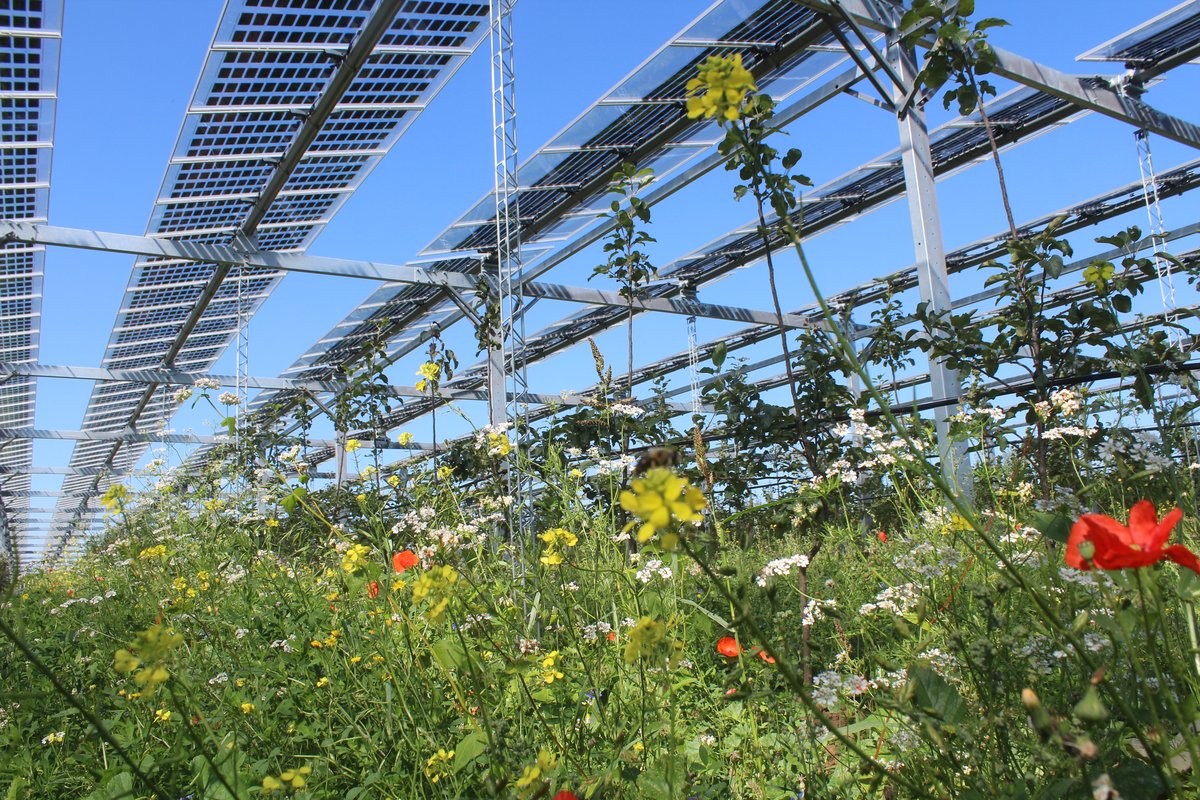Due to the very short period of time until planting, the project had to be planned and constructed quickly. Therefore, the amount of steel and the design of the APV system could not yet be optimised, resulting in higher costs. On the other hand, the project participants can learn from this and optimise and further develop future projects in this respect.
In addition, the soil was adversely affected during construction, in particular due to heavy compaction of the soil. Therefore, the soil had to be loosened again before planting the apple trees.
In addition, the rainwater drainage edge of the modules is offset by about a third between the rows of trees and falls exactly into one of the two lanes of the electric narrow-track tractor. In future, the drip edge should be as central as possible between the rows of trees, as with the foil protection system of the reference area. In this way, double loading of the tramline vegetation between the rows of trees by rain and the tramline can be avoided.
In general, the food-energy nexus was very well considered in the research design, but the water aspect was underestimated. In cooperation with the farmer, DLR Rheinpfalz, BayWa AG and BayWa r.e., a subsequent integration of a fully automatic and digital irrigation and frost protection system is planned for 2022 so that this weak point in the experimental design can be remedied.
In addition, the trees get wet in the lower third (leaves) during lateral rainfall. However, since the main yield zone will later not be in this area, which is now wet due to the »only« 2 m wide modules, the tree virtually grows into the shelter. So far, the effects are not very dramatic, because only a long period of leaf wetness leads to an infection with apple scab. We hope that the periphery will dry out quickly so that this should not be a problem.

